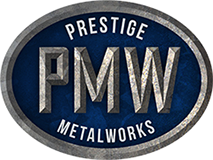Title Page
-
Office
-
Conducted on
-
Zenith Search Representative
-
Location
Inspection Checklist
Prevention of Slips, Trips, and Falls
-
Are cables and cords free from foot traffic areas and not posing a trip hazard?
-
Is the front reception area free from slip and trip hazards (e.g., boxes, bins, cords)?
-
Are kitchen floors free from slip and trip hazards (e.g., spills, boxes, bins)?
-
Is kitchen cleanliness or hygiene signage on display?
-
Are entrances, doorways, and exits all clear and free from slip and trip hazards?
-
Are hallways, paths, and floor space free from slip and trip hazards (e.g., no stored boxes, cords, low-lying furniture)?
-
Are bathrooms free from slip and trip hazards (e.g., spills, rubbish)?
-
Is bathroom cleanliness or hygiene signage on display?
-
Are slip hazard signage, a broom, dustpan, and cut-proof gloves available?
-
Are staff members aware of the location of slip hazard signage, a broom, dustpan, and cut-proof gloves? (Record their answer)
-
Are carpets and mats free from any loose or fraying edges that could be a trip hazard?
Stairs
-
Is the railing fitted and adequate with 'hold handrail' or '3 points of contact' and similar signage on display?
-
Do stairs have 'toe-boards' with no visible gaps when standing at the bottom looking at the stairs?
-
Do stairs have a non-slip surface or grip that is in good repair?
-
Are stairs free from projecting fittings, nails, or other potential hazards?
-
Is the lighting adequate in the stairwells?
Communications Room
-
Are cables and cords within the Communications Room free from foot traffic areas and not posing a trip hazard?
-
Is the Communications Room free of flammable materials (e.g., boxes, paper)?
-
Is the Communications Room a secure area and not accessible to non-authorized personnel?
-
Is there a CO2 fire extinguisher located outside the room entrance?
Emergency Procedures and First Aid
-
Is emergency information on display, including pictures of Fire Wardens, First Aid Officers, site emergency evacuation plan, and floor maps?
-
Are the bomb threat procedure flyers located under all phones that receive external calls in the office?
-
Are there adequate first aiders and wardens trained to cover the branch's operating hours?
-
Have fire wardens received training within the past 2 years?
-
Has a fire drill been conducted within the last 12 months and the drill report saved to the shared drive as evidence?
-
Do first aiders hold current training certificates (must be renewed every 3 years for first aid and 12 months for CPR) and are certificates uploaded to SharePoint?
-
Are exits clearly marked and exit signs illuminated?
-
Have fire extinguishers, reels, and fire blankets been tested and tagged within the last 6 months?
-
Are fire extinguishers all attached to walls?
-
Are first aid kits appropriately stocked with in-date items (e.g., band-aids, rubber gloves, eye wash, bandages, scissors)?
Electricity
-
Are power points free from overloading (e.g., no piggy-backing of double adapters, power boards, extension cords)?
-
Are electrical cords and equipment free from fraying, damage, visible wear, and tear?
-
Are electrical cords and equipment free from wet areas and heat sources?
-
Are Residual Current Devices or safety switches fitted to electrical meters/switchboards (e.g., will power be cut if a circuit is overloaded)?
-
Are power outlets securely fitted to a solid surface and not floating out of walls/workstations?
-
Has electrical testing and tagging been completed?
Security
-
Has the reception desk been fitted with a duress alarm or bell?
-
Are staff members aware of the name of the security company and the password in case the duress alarm is activated? (Ask one employee and record their response)
-
Have identified staff members (e.g., Receptionists & Consultants) completed Aggressive Behavior Training? (Ask one employee and record the response)
-
Are employees aware of what to do if a threatening or suspiciously acting individual enters the office? (Ask one employee and record their response)
-
Is there a physical barrier (e.g., door) between employees and members of the public who can enter the premises, and is the barrier kept locked?
-
Are all 'staff only' areas of the office restricted to swipe card/fob access only?
-
Are staff working in isolated areas of the office aware of what to do in case of an emergency, first aid requirement, or threatening individual? (Ask one employee and record their answer)
Hazardous Substances
-
Is a Hazardous Substances Register in place and easily accessible? (No flammable substances are to be stored onsite)
-
Are Safety Data Sheets (SDS) available for all hazardous substances?
Other Office Hazards
-
Are filing cabinets, shelves, and storage racks secure and free from the risk of falling or moving?
-
Are items in storerooms, cupboards, and shelves stored at a height between the knees and shoulders?
-
Are all lights working in the office at the time of inspection?
-
Are office areas well ventilated?
-
Is safety signage displayed and adequate?
-
Are photocopiers and printers located at least 1-1.5 meters away from workstations and air conditioning sensors?
-
Are paper-cutting guillotines adequately guarded?
-
Are office areas free from superseded, faulty, or broken equipment (including storerooms and old peripherals)?
-
Is the office free from industrial cleaning or other chemicals (other than standard cleaning equipment such as Spray & Wipe, Windex, etc.)?
-
Are items stored at a height no higher than can be reached by a person on a two-step ladder?
-
Is a two-step ladder or stool available in the office with the 'Australian Standard' label? (All other ladders are to be removed)















